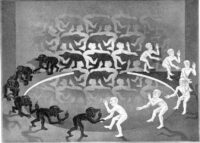The tragedy in Aurora, Colorado this past week reminds me of the killings by Charles Whitman in Texas during 1966. Whitman was the son of a middle class family, a former marine who climbed to the top of a tower at the University of Texas in Austin and shot 46 people with a high-powered rifle; fourteen people died, including Whitman, who was shot by police. Earlier in the day, he had murdered both his mother and wife by stabbing them to death.
The nation was horrified, and the media ablaze with speculation about the events. The frenzy was aided by Whitman’s copious writings in his journal, in which he revealed that, much to his dismay, he was besieged by violent and irrational thoughts he could not understand or explain. In a suicide note, he wrote, “I do not quite understand what it is that compels me to type this letter. Perhaps it is to leave some vague reason for the actions I have recently performed. I do not really understand myself these days. I am supposed to be an average reasonable and intelligent young man. However, lately (I cannot recall when it started) I have been a victim of many unusual and irrational thoughts.” The actions he refers to is the killing of his wife and mother.
Whitman sought help from health professionals. He told his doctor about his violence-filled fantasies, his discomfort with them and the way they intruded upon his thoughts. Unfortunately, his pleas for help were not adequately addressed. He concluded his suicide note requesting that his body be used by science so that “Maybe research can prevent further tragedies of this type.”
When an autopsy was performed a cancerous tumor was discovered adjacent to his amygdala, the primitive organ within the brain that controls emotion. Whitman was indeed subject to forces beyond his control and free will, the victim of his own body’s cancer and its specific location. One can only imagine the torment his rational self felt at the knowledge of what his uncontrollable, violent emotions had engendered.
It now appears that James Holmes, like Charles Whitman, sought help and was under the care of a psychiatrist. He mailed a package to her well before the killings, but it was never delivered and sat in a university mail room for a week. Though details are slim, depictions of his mailed notebook include references to plans and drawings of the murder he would later commit. That Holmes is seriously disturbed is beyond dispute; anyone who commits such a crime is clearly unbalanced. What is at the root of his disturbance, however, has yet to be understood, and unlike Charles Whitman, Holmes is still alive and available to be questioned and tested. Insane or not, the crime is real, and the consequences will be severe.
Insanity remains a defense within the law, even when the facts of a case are not in dispute. Clearly, Charles Whitman was not in control of his actions; short of major brain surgery, if he had lived his condition would never have been ascertained in 1966. In 2012 advanced technology affords James Holmes and our system of justice many sophisticated diagnostic and imaging tools to determine if there is an organic reason for his behavior. We can judge his actions heinous and horrible, but as to Holmes’ responsibility for those actions, the “jury” remains out.





Be First to Comment